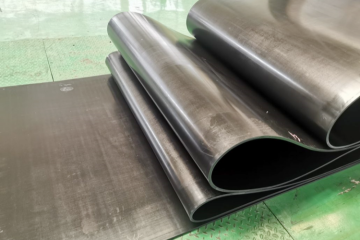In the ever-evolving landscape of supply chain management, warehouses are the backbone of logistics and distribution. As e-commerce continues to surge and customer expectations rise, warehouses must adapt to meet increasing demands for speed and accuracy. Enter robotics: a game-changer in warehouse efficiency. The integration of robotics warehouse operations is not just a trend but a revolution transforming how goods are stored, retrieved, and shipped.
Enhanced Efficiency And Productivity
One of the most significant benefits of robotics in warehouses is the dramatic increase in efficiency. Robots can do things over and over again much faster and more accurately than humans can.
Robotic picking systems, such as robotic arms equipped with advanced sensors and cameras, can identify, pick, and place items with precision. Often, these systems are connected to warehouse management systems (WMS) to make picking easier, cut down on mistakes, and speed up the process of fulfilling orders.
Reducing Operational Costs
Robotic technology can cost a lot to buy at first, but it saves a lot of money in the long run. Robots can operate 24/7 without breaks, reducing the need for shift changes and overtime pay. This continuous operation translates to higher throughput and faster order processing times.
Moreover, robots reduce the risk of workplace injuries associated with manual handling of heavy or awkward items. Fewer injuries mean lower healthcare costs and reduced compensation claims, contributing to overall cost savings for the organization.
Improving Accuracy And Reducing Errors
Accuracy is paramount in warehousing, especially in an age where customers expect perfect order fulfillment. Robotic systems are equipped with sophisticated sensors and vision systems that ensure items are correctly identified, picked, and packed. People can make mistakes that cost a lot of money, like sending the wrong goods or not having enough supplies, but this level of accuracy makes mistakes much less likely.
Robots also enable better inventory management by maintaining accurate records of stock levels in real-time. This data is crucial for optimizing inventory turnover and ensuring that stock levels meet demand without overstocking or stockouts.
Enhancing Flexibility And Scalability
The dynamic nature of e-commerce requires warehouses to be adaptable and scalable. Robotics provide the flexibility needed to handle varying order volumes and adapt to changing inventory requirements. For new goods or changes in the layout of the warehouse, automated systems can be reprogrammed or reconfigured without causing a lot of problems.
Furthermore, robotics enable warehouses to scale operations efficiently. As order volumes increase, additional robots can be integrated into the existing system without the need for extensive reconfiguration. Businesses that want to grow or adapt to changes in seasonal demand need to be able to scale their operations.
Boosting Safety And Ergonomics
Safety is a critical concern in warehouse environments, where manual handling of heavy items and repetitive tasks can lead to injuries. Robots make things safer by doing dangerous jobs and making things easier on people’s bodies. For example, robots can handle lifting and transporting heavy boxes, while human workers focus on more strategic roles such as quality control and system management.
Better ergonomics is also helped by robotics, which keeps workers from having to do the same things over and over or being in awkward situations. This improvement in ergonomics can lead to higher job satisfaction and reduced turnover rates among warehouse staff.
Real-World Applications And Success Stories
Numerous companies have successfully implemented robotics in their warehouses, showcasing the transformative impact of this technology. This automation has significantly reduced order processing times and increased operational efficiency.
Conclusion
With robots being used in warehouses, things are much more efficient, accurate, and safe. By automating repetitive tasks, reducing operational costs, and enhancing flexibility, robotics are revolutionizing the way warehouses operate. Robotics will play a bigger part in warehousing as technology keeps getting better. This will help businesses improve their operations and keep up with the needs of a market that is changing quickly. It’s not enough to just keep up with the competition; you need to embrace this revolution to stay ahead in an industry that is changing quickly and expecting more and more.




